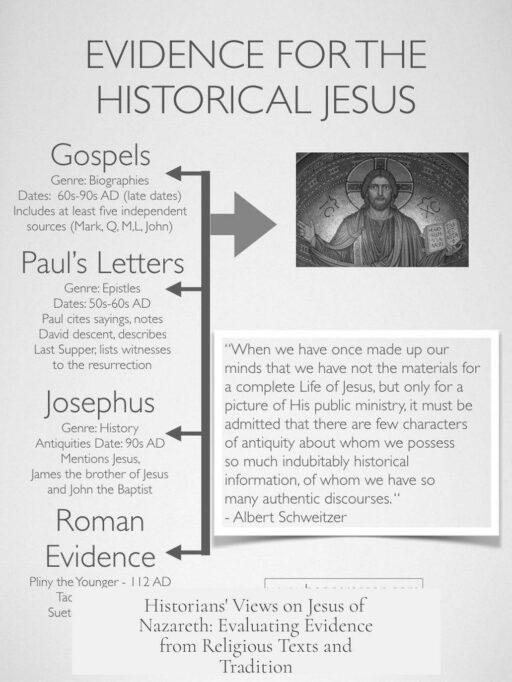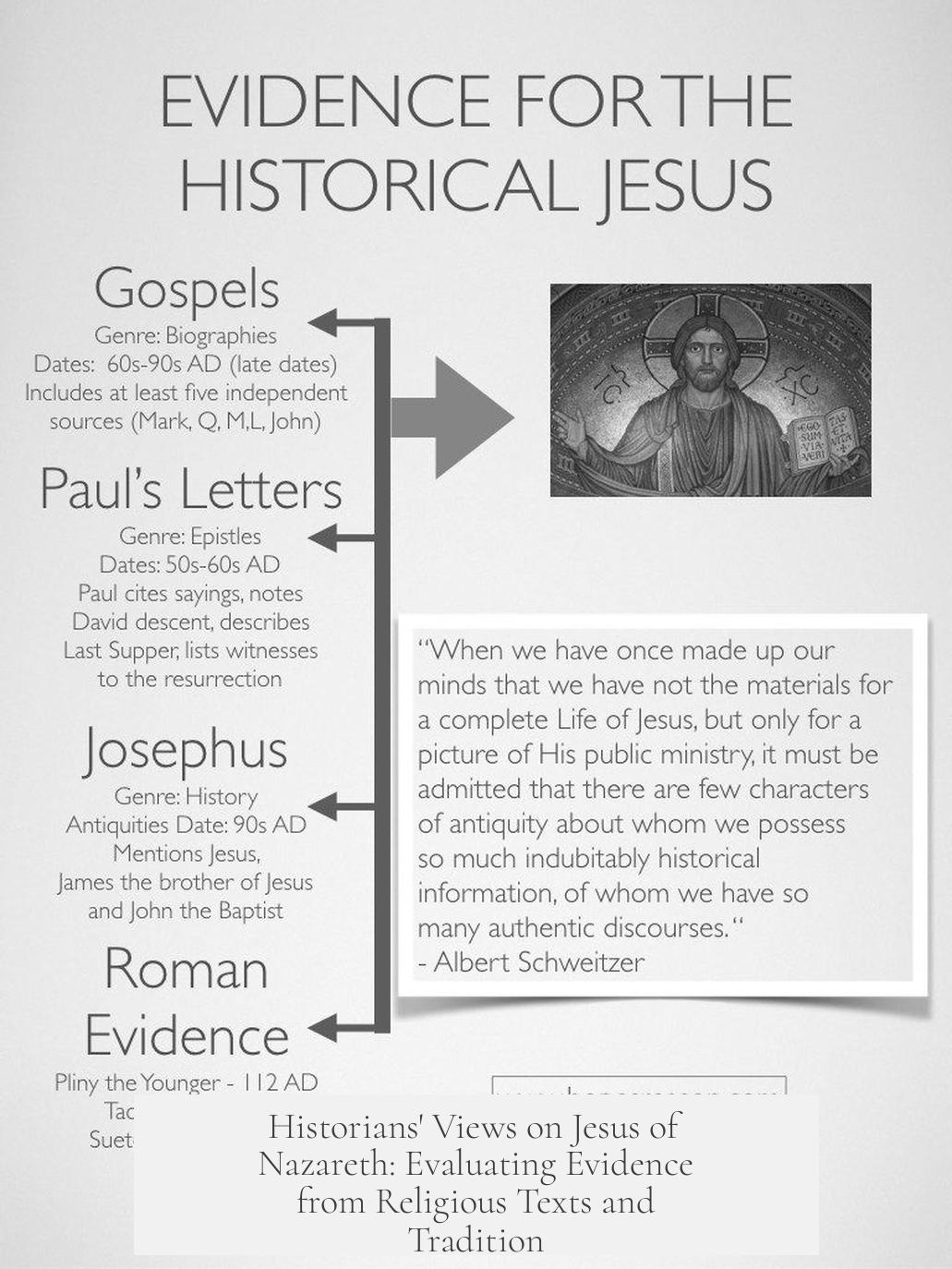Most historians consider Jesus of Nazareth a real person despite the primarily religious nature of writings about him because independent historical evidence and critical analysis support his historicity. The core reason is that the claim Jesus never existed fails to explain the origin of early texts naming him and contradicts multiple early sources.
The notion that Jesus did not exist is held by only a small minority of scholars. Most experts reject the “Christ Myth” theory because it lacks a convincing alternative to why early Christian texts reference Jesus at all. Criticism alone of the Gospel accounts does not make the myth hypothesis more likely. A plausible explanation must address the origin of these writings and independent attestations.
Beyond the Gospels, extrabiblical sources mention Jesus. The most notable is Josephus’ Testimonium Flavianum (TF), a Jewish historian writing in the late first century. Though scholars debate certain Christian interpolations in the TF, Josephus also refers to “James, the brother of Jesus who was called Christ.” This mention of James and Jesus by a non-Christian near-contemporary historian supports Jesus’ historical reality.
Jesus’ situation is comparable to other religious founders like Muhammad or Gautama Buddha, who also did not write any personal accounts. Buddha lived before writing was common in his region; his teachings were preserved orally. Muhammad’s teachings were compiled about 20 years after his death. Jesus’ sayings and events were similarly transmitted orally and compiled in written form decades later.
The synoptic Gospels (Mark, Matthew, and Luke) share consistent biographical details about Jesus, indicating a common oral tradition underlying their texts. Mark often frames narratives around sayings he may not fully understand, suggesting these sayings circulated independently before being woven into stories. Matthew and Luke rely on Mark and a lost source called ‘Q,’ while John, despite its distinct style, confirms basic facts about Jesus’ life:
- Jewish background and origin in Nazareth
- Mother Mary and brother James
- Craftsman or carpenter by trade
- Preached with twelve disciples
- Arrest, betrayal, and execution by Pontius Pilate
- Claimed resurrection on the third day
Even before the Gospels, letters written by Paul—the earliest texts about Jesus—describe him as a real human being. Paul’s letters (dating from 50-60 CE) mention Jesus as a Jewish man born of a woman, a descendant of Abraham and David. They affirm his physical life, death by crucifixion under Roman authority, and his brother James’ leadership role among early Christians. Paul describes Jesus’ followers numbering over 500 individuals, including named apostles and brothers, affirming his active historical presence.
Furthermore, Paul notes Jesus’ earthly ministry during the Herodian era. He refers to Jesus with a human Jewish name and physical body, highlighting details like his burial and Last Supper ritual. These specifics align with a bodily, historical individual rather than a purely mythical or allegorical figure. Paul’s letters also show Jesus had human traits: obedience, suffering, rejection by powerful Jewish leaders, and deliberate acceptance of death.
In sum, historians conclude that the earliest Christian communities believed strongly in the historicity of Jesus. They had access to eyewitnesses and companions who knew Jesus personally. The consistency across multiple sources, both Christian and non-Christian, supports the conclusion that Jesus of Nazareth lived in the first century CE.
| Evidence Type | Details |
|---|---|
| Extracanonical Sources | Josephus’ references to Jesus and James; Tacitus attests to Jesus’ execution by Pilate |
| Paul’s Letters (50-60 CE) | Earliest documents; describe Jesus as human, crucified, with brothers and followers |
| Gospels | Consistent biographical details; oral tradition underlying written texts |
Additional scholarly resources and FAQs on this topic offer deeper insights, such as the detailed discussions on platforms like /r/AskHistorians, which explore the evidence systematically for those seeking more information.
- Minority of scholars support Jesus myth theory; most reject it
- Extracanonical references affirm Jesus’ existence
- No contemporaneous writings by Jesus—common for religious figures of the era
- Paul’s letters provide early historical evidence of Jesus’ life
- Gospels share consistent, corroborated biographical elements
- Historians require explanations of early texts that myth theory does not provide
Why Do Most Historians Consider Jesus of Nazareth a Real Person Despite Only Religious Documents Available?

The simple answer is this: most historians agree Jesus of Nazareth truly lived because historical methods, independent sources, and early writings provide enough evidence to affirm his existence — even though the main documents come from religious texts.
Sounds contradictory? Let’s unpack why this belief stands strong in the academic world, beyond skeptical takes or popular myths.
Is Jesus Just a Myth? The Minority View vs. the Majority
First, the idea that Jesus never existed — known as the “Christ Myth theory” — is rare among scholars. It’s often called a “minority position,” but that’s putting it gently. Actually, very few serious historians back it. Robert M. Price is one of the few notable mythicists, and even he takes a nuanced stance. Others, like Doherty, don’t meet scholarly rigor in this debate.
So, despite catchy headlines, the vast majority of experts agree that Jesus was a historical figure. Why?
The Challenge of Reliance on Religious Texts
It’s a fair concern. The main documents about Jesus come from the Bible, particularly the Gospels — religious works written to inspire faith, not simply record facts. Can historians trust these?
Well, critics of the myth theory argue that simply dismissing the gospels’ integrity isn’t enough to claim Jesus is fictional. If you deny Jesus existed, logically you need to explain where early Christian writings, mentioning Jesus, even come from.
Interestingly, it’s not just Christian scriptures that mention Jesus:
- Flavius Josephus, a respected first-century Jewish historian, mentions Jesus in his Antiquities of the Jews. Although his text might have been edited by Christians, he refers to James as “the brother of Jesus, who was called the Christ.” That’s a big deal — it strongly suggests Jesus was a known figure.
Oral Tradition: A Common Practice for Religious Figures
Some might think if Jesus didn’t write his own books, he’s less real. But lots of ancient leaders left no writings. Muhammad’s teachings were recorded about 20 years after his death, while Gautama Buddha lived before writing existed in his culture — his teachings were passed orally for generations.
Jesus’s sayings and stories likely followed the same path. In fact, passages in the Gospel of Mark show signs of editors compiling collections of sayings. Mark often interprets sayings he doesn’t fully understand, which hints at earlier oral sources.
The Gospels Show Consistent Biographical Details

Despite theological differences, the four gospels agree on several key facts:
- Jesus was a Jew from Nazareth.
- He had a mother named Mary and a brother named James.
- He worked as a craftsman or was the son of one.
- He traveled teaching with twelve disciples.
- He was betrayed, arrested, and executed by Pontius Pilate.
- He was believed to have risen on the third day after death.
The consistency across these independent writings supports a historical figure behind the stories, rather than a total fictional creation.
Paul’s Letters: The Earliest Non-Gospel Evidence
Paul’s letters, written within a few decades of Jesus’s death, provide arguably the best early evidence for Jesus’s historicity. These letters predate the Gospels and offer details about Jesus that go beyond theological talks.
Simon Gathercole, a New Testament scholar, outlines what Paul’s letters tell us:
- Jesus was born of a woman and was Jewish.
- He descended from Abraham and David.
- His earthly life happened under Herodian rulers.
- He had a physical body, was explicitly called a man, and had a common Jewish name.
- Known personally by figures like Peter (Cephas), James, the 12 apostles, and hundreds more.
- He had brothers, including James, who spread his teachings.
- Jesus likely remained unmarried.
- He had a following of over 500 people during his lifetime.
- He was obedient, meek, faithful, and suffered wounds and abuse.
- The Jewish leaders rejected him, and Roman authorities executed him by crucifixion.
- Jesus willingly faced death and was buried after his crucifixion.
- He instituted the ritual of bread and wine — remembered during the Last Supper.
That’s a lot of detail for someone made up from scratch!
Paul’s letters strongly suggest his contemporaries believed Jesus lived with flesh and blood, not just as a mythic or spiritual idea.
Still Want to Dive Deeper?
If you’re curious about the nitty-gritty or want to see expert debates, there’s a clear and well-curated FAQ on this subject at /r/AskHistorians. It’s a solid resource packed with scholarly insights, sources, and community questions.
Putting It All Together: Why Historians Say Jesus Was Real
Here’s the summary wrapped up in simple terms:
- The myth-only theory is a small, less accepted view.
- Non-religious sources like Josephus offer independent confirmations.
- Oral transmission was the norm before writing religious texts.
- The four Gospels share overlapping, consistent biographies.
- Paul’s early letters give rich, detailed testimony about Jesus’s life and followers.
So, unlike some modern myths lacking solid early witnesses, Jesus’s existence has multiple lines of evidence supporting it. Historians use every tool — cross-referencing texts, studying historical context, and comparing with other figures — to ensure their conclusions aren’t blind faith, but reasoned judgments.
What’s fascinating is that historical Jesus studies don’t stop at saying “yes, he existed.” Scholars analyze his life’s impact, historical setting, and even the nature of the stories told about him. It’s history and human culture blended with mystery and faith traditions.
Curious What Skeptics Say?

The skeptics often point to theological bias in the Gospels or potential Christian edits in Josephus. But good historians recognize these issues and factor them in. The question is not if every detail is perfect, but if there is enough converging evidence to justify belief in a real person behind the tradition. So far, the scales tip clearly toward a historical Jesus.
In the End: Existence vs. Interpretation
Believing Jesus existed doesn’t mean agreeing on who exactly he was or the miraculous claims made about him. Historians focus on the basic fact of his existence, not the religious interpretations layered on later by his followers.
There’s a clear difference between historical Jesus as a man from Nazareth and Christ of faith as seen through religious eyes. The former is well supported. The latter is a matter of personal belief.
So next time you hear, “We only have religious records about Jesus,” remember: historians dig deeper. They look for consistency, outside references, early testimonies, and cultural context. And that’s why they say Jesus of Nazareth most likely really walked the earth, arguments and skepticism notwithstanding.
History isn’t perfect, but it isn’t blind either. When the dust settles, Jesus’s footprint remains clearly visible.




